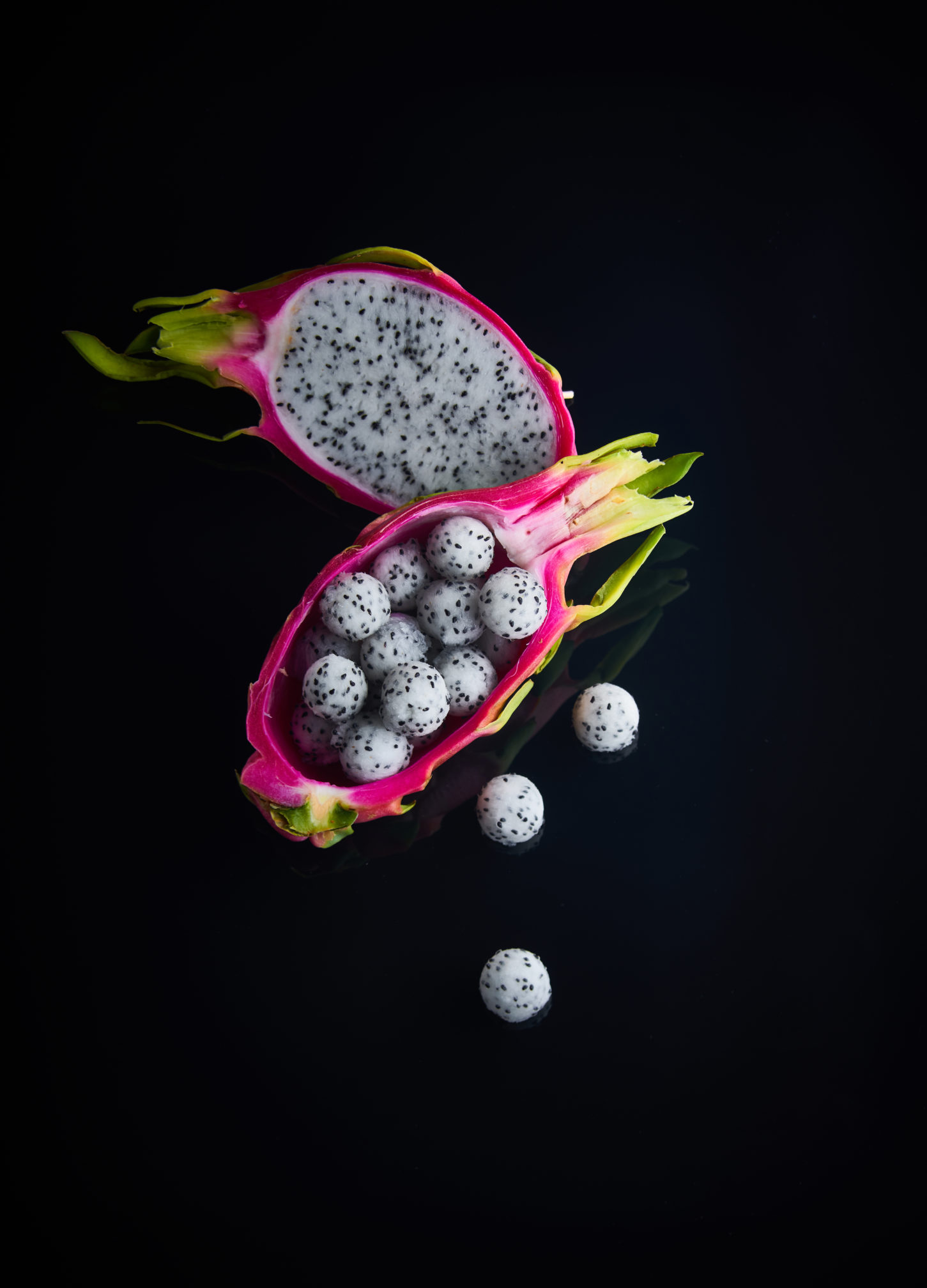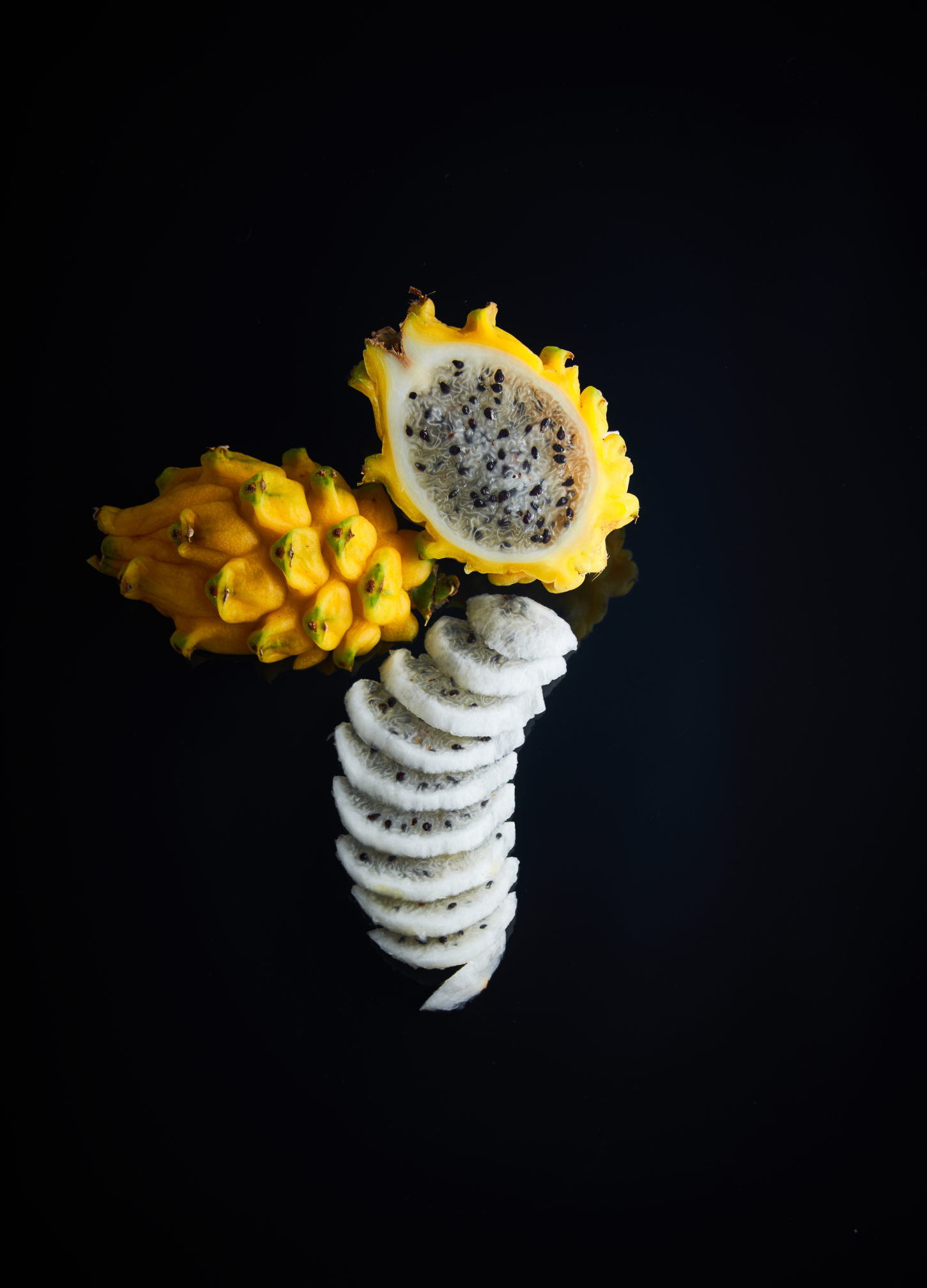Pitaya
The red version of dragon fruit
The red pitaya is native to Colombia and Guatemala. Like its yellow cousin, it is oval in shape; however, it is rounder. Its skin is dark purple-pink and its flesh is pink or light purple. Less flavourful but more decorative than the yellow pitaya, it has the same consistency (similar to kiwi). It can be enjoyed plain, or fried or in fruit salads. Combining its blended pulp with water, then freezing it in ice cube trays will give you surprising ice cubes to decorate your cocktails!
The red pitaya contains vitamin C, fibre, iron, phosphorus and calcium. Like its yellow cousin, it has black seeds containing a natural fat that improves intestinal transit.
The yellow version of dragon fruit
The yellow pitaya is native to Colombia and Guatemala. It is oval and bumpy with yellow skin and translucent white flesh. This juicy and refreshing fruit has a delicate, sweet flavour. Its texture is similar to that of kiwi and, like kiwi, it can be cut in half and eaten with a teaspoon. Ideal for decoration, it can also be enjoyed in fruit salads or cocktails or fried or even blended to make a sauce to accompany white meats.
The yellow pitaya contains vitamin C, whose antioxidant properties slow down cell ageing and protect the body against cardiovascular disease and certain cancers. It also contains fibre, iron, phosphorus and calcium. Its black seeds contain a natural fat that improves intestinal transit, making it an excellent laxative!
The 100% red version of dragon fruit
Slightly sweeter than its white-fleshed cousin, the red-fleshed pitaya is also native to Colombia and Guatemala. Like its yellow cousin, it is oval in shape; however, it is rounder. Its skin is dark purple-pink and its flesh is pink or light purple. Less flavourful but more decorative than the yellow pitaya, it has the same consistency (similar to kiwi). It can be enjoyed plain, or fried or in fruit salads. Combining its blended pulp with water, then freezing it in ice cube trays will give you surprising ice cubes to decorate your cocktails!
The red pitaya contains vitamin C, fibre, iron, phosphorus and calcium. Like its yellow cousin, it has black seeds containing a natural fat that improves intestinal transit.


